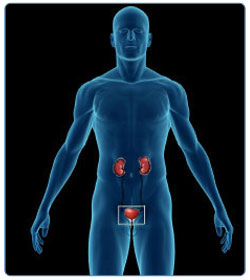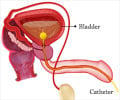Diagnosis
A good history helps to understand the problem and to decide the best course of treatment .
A knowledge of your previous surgeries, your gynecologic history or the presence of other diseases such as diabetes, hypertension, heart disease, asthma, tuberculosis or any other neurological disorder is complementary. It is also advisable to bring along with you previous health records if any so that the doctor can go through it, if necessary.
Most of the times, you may be asked to fill up a bladder dairy (or voiding dairy) for a minimum of three consecutive days. For this, you have to maintain a record of the timing and quantity of fluid intake and urinary output. It will also have a special column on episodes of urine leak associated with the degree and the nature of leak. Most often, patients are too lazy to do this, but a lot of useful information can be obtained form the bladder dairy if done correctly.
It is your responsibility to project to the clinician how much you are bothered by your condition and how it interferences with your social life. If you think you are suffering from stress incontinence it may be a good idea to ponder on the queries given below which may require careful observation and understanding.
- What is your actual problem?
- What is the duration of your problem?
- When does urine leak occur?
- How much does it leak?
(Is it just a few drops or is it wet enough to soak your undergarments or does it run down your legs?)
- Do you have to go the toilet very frequently?
- Can you hold urination for some time or do you have to rush to the toilet to pass urine?
- Do you have a burning sensation while passing urine?
Physical examination - To diagnose the condition the doctor will examine you internally and ask you to cough to observe if you leak. This examination is best done when your bladder is full and you have sensation to pass urine.
Urodynamics Test - To further confirm the condition and rule our other associated conditions like an overactive bladder a Urodynamic test maybe required. This is a day procedure and can take a couple of hours. In this procedure a tube is passed through the urethra that is well -anchored in the bladder. Once anchored, the bladder is filled with fluid. During the test the desire to pass urine like ‘normal desire’ and ‘strong desire’ and with it the volume infused is noted. The patient may then be subjected to the kind of ‘stress’ that triggers the incontinence. The timing of the leakage of urine is observed and an inference is made regarding the type of incontinence. At the end of the procedure you are asked to void urine in a funnel to measure its velocity, volume and the pressure generated by the bladder.The above test will make the doctor decide the kind of treatment that is required for treating the condition.
If the leak is minor or moderate and not affecting your quality of life the doctor will suggest some lifestyle changes and reach you pelvic floor – Kegel’s exercise. However if the leak is significant a surgical option maybe suggested.











